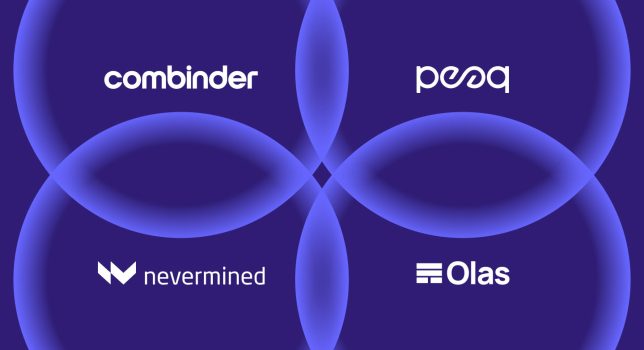Core Web Vitals are a set of specific website performance metrics that Google uses to assess the overall user experience provided by a web page. These metrics focus on three key aspects of a page’s loading experience: loading speed, interactivity, and visual stability. The three Core Web Vitals are:
Largest Contentful Paint (LCP):
This metric measures the time it takes for the largest content element (such as an image or text block) to become visible within the viewport. A good LCP score is achieved when this happens within the first 2.5 seconds of a page starting to load.
First Input Delay (FID):
FID measures the time from when a user first interacts with a page (e.g., clicking a button or a link) to the time when the browser responds to that interaction. To provide a good user experience, pages should have an FID of less than 100 milliseconds.
Cumulative Layout Shift (CLS):
CLS quantifies the visual stability of a page. It measures the sum total of all unexpected layout shifts that occur during the entire lifespan of a page load. To provide a good user experience, pages should maintain a CLS score of less than 0.1.
Google considers these Core Web Vitals as essential ranking factors, and they play a significant role in determining how well a website ranks in search results, especially on mobile devices. Pages that offer a better user experience by meeting the Core Web Vitals thresholds are more likely to rank higher than pages that do not.
Now, let’s discuss how to monitor your website’s Core Web Vitals performance using Google Search Console:
Verify your website in Google Search Console:
If you haven’t done so already, you need to verify ownership of your website in Google Search Console. Visit the official Search Console website (https://search.google.com/search-console) and follow the instructions to verify your site.

Navigate to the Core Web Vitals report:
In the left-hand sidebar of Google Search Console, click on “Core Web Vitals” under the “Enhancements” section. This report provides an overview of your site’s performance in terms of the three Core Web Vitals metrics.
Review the data:
The Core Web Vitals report will display data on how many URLs are passing or failing each of the Core Web Vitals metrics. It will also show you the distribution of URLs based on the Good, Needs Improvement, and Poor categories.
Identify pages with issues: Pay attention to the URLs marked as “Poor” or “Needs Improvement.” These pages are not meeting the Core Web Vitals standards and need optimization.
Analyze potential issues: Click on the individual URLs to get more details about the specific issues affecting each page’s Core Web Vitals performance. This information will help you understand what needs improvement.
Optimize your website: Once you’ve identified the problem areas, work on optimizing the pages to improve their Core Web Vitals scores. This might involve tasks such as optimizing images, minimizing render-blocking resources, and improving server response times.
Monitor progress over time: Continue using Google Search Console to track your website’s Core Web Vitals performance regularly. The report can help you assess the impact of your optimization efforts and ensure that your pages maintain good user experience scores.
Examples
Let’s add some examples to illustrate how Core Web Vitals impact search rankings and how you can use Google Search Console to monitor your website’s performance.
Example 1: Impact on Search Rankings
Suppose you have an e-commerce website that sells various products, and you notice a decline in your organic search traffic over the past few months. After investigating, you find that your website’s loading speed has increased significantly, leading to higher bounce rates and reduced user engagement.
Using Google Search Console’s Core Web Vitals report, you identify that a significant number of your product pages have a “Poor” LCP score (largest contentful paint) of more than 4 seconds. This slow loading time is affecting the user experience negatively, leading to a drop in search rankings for those pages.
To address this issue, you optimize the images and implement lazy loading for product images on those pages. As a result, the LCP score improves, and the pages now fall under the “Good” category (LCP within 2.5 seconds). With the improved Core Web Vitals scores, your search rankings start to recover, and organic traffic to the affected product pages increases.
Example 2: Monitoring Core Web Vitals in Search Console
Suppose you run a popular blog that covers various topics, and you want to ensure that your content provides a good user experience. You have implemented AMP (Accelerated Mobile Pages) for your articles to improve page speed on mobile devices.
Using Google Search Console, you navigate to the Core Web Vitals report and find that most of your AMP pages have excellent scores for LCP and FID. However, you notice that some of the AMP pages have a “Poor” CLS score (cumulative layout shift) due to elements shifting unexpectedly as the page loads.
Upon investigation, you discover that some third-party ads embedded within your AMP pages are causing layout shifts, negatively impacting the user experience. To address this, you work with your ad provider to optimize the ad placements and minimize their impact on layout stability.
After implementing the changes, you revisit the Core Web Vitals report in Search Console and observe that the CLS scores for your AMP pages have significantly improved. This, in turn, enhances the overall user experience on your blog, leading to better engagement and possibly higher search rankings for those pages.
Example 3: Tracking Progress and Improvements
Imagine you manage a website for a non-profit organization. You have recently launched a new donation page to encourage more contributions, but you notice a high bounce rate on the page, resulting in fewer donations.
Using Google Search Console, you go to the Core Web Vitals report and find that the FID (first input delay) score for the donation page is quite high, indicating a delay in interactivity. Users are encountering delays when trying to fill out the donation form, leading to frustration and abandonment.
To address this issue, you work with your web development team to optimize the scripts and reduce the time it takes for the page to respond to user interactions. As a result, the FID score improves, and the donation page now falls under the “Good” category.
Monitoring the Core Web Vitals report over time, you observe a decrease in bounce rate and an increase in successful donations on the improved donation page. The better user experience has positively impacted the site’s overall performance, leading to increased engagement and potentially better search rankings for the donation page in relevant search results.
By regularly monitoring your website’s Core Web Vitals through Google Search Console and taking necessary optimization steps, you can enhance your site’s user experience and improve its chances of ranking higher in Google’s search results.









